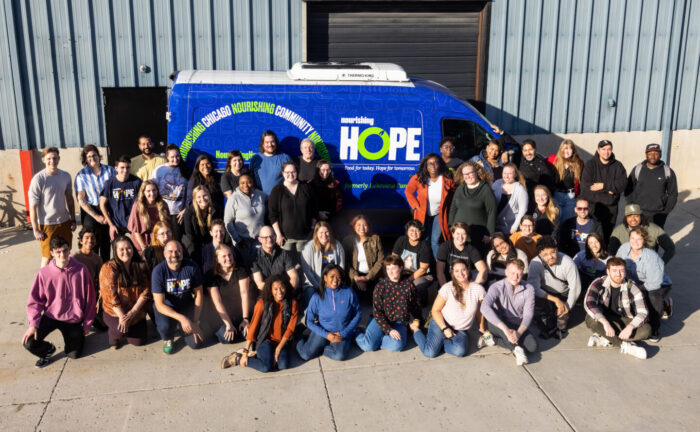
A Troubling Trend in Not-For-Profit Branding
There seems to be a trend developing in the world of not-for-profits: rebranding. Many organizations are moving from descriptive brands to broad, general brands. In most cases, this is well-intentioned but a bad move.
The Trend
In recent years, a series of not-for-profits have rebranded to general, inspirational names. Here are a few examples:
-The Lakeview Pantry, a food pantry in the Lakeview neighborhood of Chicago, is now Nourishing Hope.
-Teen Living Programs, an organization that helps young people find long-term housing, became Ignite.
-Chicago Children’s Choir rebranded to Uniting Voices.
-Just recently, the Juvenile Diabetes Research Foundation became Breakthrough T1D.
-In June, the French Institute Alliance Francaise, a New York organization dedicated to teaching French and promoting French culture, rebranded to L’Alliance.
The Logic
All of these rebranding efforts seem to be grounded in similar logic: the old brand name was seen as too narrow, and the new brand name opens up more opportunities for growth.
For example, the Lakeview Pantry explained its rebranding like this: “Nourishing Hope began the process of rebranding in 2019 after coming to the realization that its legacy name, while strong in reputation, no longer represented the work of the agency and was limiting plans to scale its impact.”
JDRF’s CMO Pam Morrisroe explained its rebranding like this: “Together, we have developed a visionary, powerful brand that more accurately reflects who we are: the world leader in type 1 diabetes research, advocacy, and community support.”
The logic isn’t wrong: a descriptive brand can feel narrow and flat. Many of the best brands in the world lack any descriptive element. Nike is only distantly related to footwear. Apple doesn’t immediately suggest computers and technology. I’m not sure what Uniqlo means, or Instagram, or Google.
The Problem
So, what is the problem?
The issue for not-for-profits is that brands that lack a descriptive element have no meaning. As a result, the organization has to create this meaning, and that takes enormous investment.
How much has Apple spent building its brand? Maybe $1 billion? How about Nike? Or McDonald’s? Each one: hundreds of millions of dollars.
Not-for-profits just don’t have the resources to create these brands. If they had the money, people would likely wonder why the organization is spending on marketing instead of working on the task at hand. As a result, these new brand names are just confusing.
What is Lakeview Pantry? It is a food pantry. Where is it? Lakeview.
What is Nourishing Hope? Is that a Christian music group? A therapy app? Maybe it is an addiction treatment center?
What is the Juvenile Diabetes Research Foundation? Just guessing here, but that might be an organization that invests in research to fight juvenile diabetes.
What is Breakthrough T1D? That sounds like a fitness plan. Or maybe it is a supplement. I guess it could be a K-Pop group.
The confusion will become a problem over time.
Here is just one issue: board membership. Every not-for-profit depends on its board. One reason board members serve is to burnish their CVs. If you are on the board of New York’s Metropolitan Museum of Art you are clearly a high flier. Say that and people notice. A meaningless name doesn’t have the same impact, “Oh, you are on the board of Breakthrough T1D. Sure, great.” It doesn’t mean much.
Another issue is with donors. If someone makes a contribution to the Lakeview Pantry, it is pretty clear what they are doing. A donation to Nourishing Hope might not provide the same feeling. Even transitioning donors to the new brand will be a challenge.
The Outlook
I suspect some of these organizations will gradually retreat and return to their old brands. Most of them still refer to their old brands, for obvious reasons.
Alternatively, the organizations should consider moving to a more descriptive brand or adding descriptive elements. At one point the Lycee Francais de Chicago, or LFC, added “Chicago’s French International School.” The line provided some clarity.
One apparently successful rebranding was America’s Second Harvest becoming Feeding America in 2008. This move shifted towards a more descriptive name. What does Feeding America do? Provides food. Got it.
For not-for-profits considering a less descriptive brand, be careful. Changing to a new brand is fun and exciting but ultimately it will only succeed with massive investment, and that investment is rarely available.
Completely agree. Why would JDRF walk away from their highly recognizable and successful brand? Breakthrough is a generic name. Could be any disease or cause.
I agree with your assessment. In early 2020 we refreshed the American Lung Association’s brand. We gave great care to not only set the tone for the future, but to bring along the current donors, stakeholders and supporters. Eg – how far could we move from the OG brand expression and still give the donor full confidence that this is the same organization that they have been supporting for years?
I hope these not for profits had the ability to do some testing in their key comms channels before the cut over. Not For Profits are about stewardship – not just to donors funding but also to the equity in their brands.